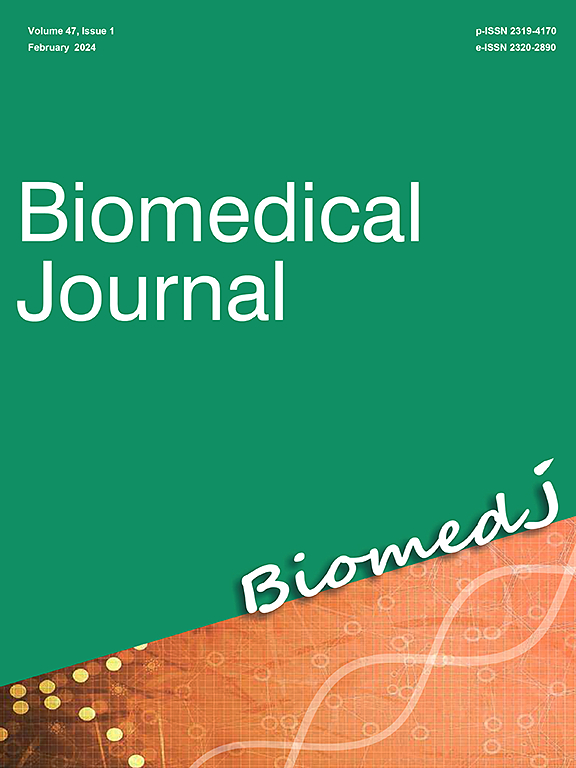肝细胞癌系统治疗 2024 年更新:从早期到晚期。
IF 4.4
3区 医学
Q2 BIOCHEMISTRY & MOLECULAR BIOLOGY
引用次数: 0
摘要
肝细胞癌(HCC)在最常见的恶性肿瘤中排名第六,但却是全球癌症相关死亡的第三大原因。过去二十年来,HCC 的系统治疗取得了重大突破,改善了治疗效果。除了多种酪氨酸激酶抑制剂(mTKIs)外,免疫检查点抑制剂(ICIs)和抗血管生成药物的应用也越来越广泛。ICI 和抗血管生成药物或双 ICIs 的联合应用因其显著的反应率而成为新的治疗标准。然而,目前可用的全身治疗方案主要用于某些无法从局部治疗中获益的中晚期患者。对于早期 HCC 患者,尤其是治愈性治疗后复发风险较高的患者,支持将全身治疗作为新辅助或辅助疗法的证据仍然有限。本综述梳理了包括 mTKIs 和 ICIs 在内的全身治疗的最新进展,考虑了一线和二线治疗的结果、新辅助和辅助治疗的作用以及与局部区域治疗的结合。会议还总结了正在进行的各种临床试验,这些试验涉及全身疗法在早期、中期和晚期 HCC 患者中的作用以及潜在的新靶点,结果表明全身疗法不再局限于晚期 HCC。此外,包括双特异性抗体和嵌合抗原受体T细胞在内的T细胞重定向策略的引入彻底改变了HCC的治疗格局。未来的研究应侧重于深入探索肿瘤屏障的建立机制。本文章由计算机程序翻译,如有差异,请以英文原文为准。
Hepatocellular carcinoma systemic treatment update: From early to advanced stage
Hepatocellular carcinoma (HCC) ranks the sixth most common malignancy but the third leading cause of cancer-related mortality in the world. Significant breakthroughs have been made in systemic treatment for HCC over the past two decades, which have improved treatment outcomes. In addition to multiple tyrosine kinase inhibitors (mTKIs), immune checkpoint inhibitors (ICIs) and antiangiogenic drugs are increasingly being applied. The combination of ICI and antiangiogenic or dual ICIs has become the new standard of care due to remarkable response rates. However, currently available systemic regimens are primarily reserved for certain patients in the intermediate and advanced stages who will not benefit from locoregional treatments. Evidence supporting the use of systemic treatment as neoadjuvant or adjuvant therapies in patients with early-stage HCC, especially the high risk of recurrence after curative treatments, remains limited. This review identified recent developments in systemic therapy, including mTKIs and ICIs, considering results on first- and second-line treatment, role of neoadjuvant and adjuvant settings, and combination with loco-regional therapy. Various ongoing clinical trials regarding the role of systemic therapies and potential novel targets in patients with early-, intermediate-, and advanced-stage HCC were also summarized and revealed that systemic therapy is no longer limited to advanced-stage HCC. Moreover, the introduction of T-cell redirecting strategies, including bispecific antibodies and chimeric antigen receptor T cells, has revolutionized the treatment landscape for HCC. Future research should focus on an in-depth exploration of the mechanisms governing the establishment of tumor barriers.
求助全文
通过发布文献求助,成功后即可免费获取论文全文。
去求助
来源期刊

Biomedical Journal
Medicine-General Medicine
CiteScore
11.60
自引率
1.80%
发文量
128
审稿时长
42 days
期刊介绍:
Biomedical Journal publishes 6 peer-reviewed issues per year in all fields of clinical and biomedical sciences for an internationally diverse authorship. Unlike most open access journals, which are free to readers but not authors, Biomedical Journal does not charge for subscription, submission, processing or publication of manuscripts, nor for color reproduction of photographs.
Clinical studies, accounts of clinical trials, biomarker studies, and characterization of human pathogens are within the scope of the journal, as well as basic studies in model species such as Escherichia coli, Caenorhabditis elegans, Drosophila melanogaster, and Mus musculus revealing the function of molecules, cells, and tissues relevant for human health. However, articles on other species can be published if they contribute to our understanding of basic mechanisms of biology.
A highly-cited international editorial board assures timely publication of manuscripts. Reviews on recent progress in biomedical sciences are commissioned by the editors.
 求助内容:
求助内容: 应助结果提醒方式:
应助结果提醒方式:


